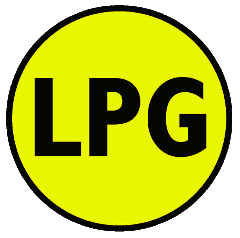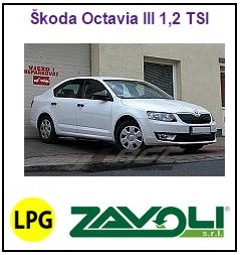Conversion FSI, TFSI, GDI, TSI
For partial engine load, which is quite common, thanks to the engine fuel injection layered work with very lean. At that point, the minimum fuel concentrated around the spark plug, so that they could even be ignited. The remaining space is filled cylinders significantly poorer mixtures, one might say almost clean air. Mixing ratios for FSI engines is around 1:40 to 1:50. This ratio has been below the flammability limit of the mixture. Consequently, in order to ignite at all possible, is fed during the intake air stream using a specially shaped pipe so that there is a steep winding beliefs. Just before the end of the stroke of the piston under high pressure is injected minimum required amount of gasoline. The belief in the cylinder creates several layers of a mixture, each having a different air-fuel ratio. This creates it layered performance. The richest mixture is concentrated around the candles. The spark ignites the mixture, and then burning fuel ignites the remaining lean.
Motor gasoline direct injection also benefits from a small heat losses. The layer of air around of the "cloud" of the mixture around the candle because it isolates them from the cylinder wall and piston heads.
Gallery přímovstřikových rearrangements
What does the abbreviation FSI mean?
FSI Fuel Stratified Injection means, or layered fuel injection.
Among the advantages of laminated injection include: improved performance, higher power and torque while saving up to fifteen percent of fuel. All thanks to direct fuel injection and the ability to monitor performance through quality control air-fuel mixture that is supplied to the cylinders. Conventional gasoline engines limit the amount of power throttling mixture suction.
The abbreviation FSI originated from England Fuel Stratified Injection and indicates the new petrol engines with direct fuel injection. Compared engines with fuel injection into the intake manifold these motors have a higher performance and better torque curve. Another advantage is the low fuel consumption and compliance with stricter emission limits.
The technical basis of FSI is to look simple, but in reality it's not frugal. In principle, the petrol engine combusting the fuel air mixture that contains more air and less fuel than conventional engines. For them, the fuel is injected into the intake air during an intake stroke so that a homogeneous air-fuel mixture, which is the whole volume of the combustion chamber well burnt. The motor thus works with the. Homogeneous mixture and is controlled by the oxygen sensor so that the catalyst was most efficient reduction of pollutants. For engines FSI may be gasoline injection amount so small that, when a homogeneous air mixture, this mixture was thus "poor" that it was not at all possible to ignite.
What does the abbreviation TFSI mean?
The abbreviation TFSI is a designation used for engines with direct injection gasoline and turbocharged.
Acronym GDI indicates gasoline engines with direct injection gasoline. The automaker Mitsubishi was the first manufacturer to introduce these engines. The same label also carry engines automakers Hyundai and Kia.
First GDI engine, or engine with gasoline direct injection, the company presented Mitsubishi Galant model. The year was 1996 and the modern inline four-cylinder engine with 1.8 GDI DOHC and four valves per cylinder began to write a new chapter in the history of petrol engines. Engines with direct fuel injection burn fuel more efficiently, thus achieving higher performance, better torque curve, lower fuel consumption and lower emissions emisívýfukových.
The main difference between the injection inlet and direct fuel injection is the point where the mixture is formed. Previously, fuel is injected into the air stream in the intake manifold, with the advent of direct injection fuel is injected directly into the cylinder. Engines with direct petrol injection therefore have some structural differences:
▪ suction duct is vertical directions for optimal air flow and efficient cylinder filling
▪ bottom of the piston is shaped; piston design, together with a vertical suction channel allows you to direct current mix parallel to the cylinder axis
▪ GDI engines have high pressure fuel pump common rail injectors and high pressure
What GDI acronym mean?
GDI (Gasoline Direct Injection)
Acronym GDI indicates gasoline engines with direct injection gasoline. The automaker Mitsubishi was the first manufacturer to introduce these engines. The same label also carry engines automakers Hyundai and Kia.
First GDI engine, or engine with gasoline direct injection, the company presented Mitsubishi Galant model. The year was 1996 and the modern inline four-cylinder engine with 1.8 GDI DOHC and four valves per cylinder began to write a new chapter in the history of petrol engines. Engines with direct fuel injection burn fuel more efficiently, thus achieving higher performance, better torque curve, lower fuel consumption and lower exhaust emissions.
The main difference between the injection inlet and direct fuel injection is the point where the mixture is formed. Previously, fuel is injected into the air stream in the intake manifold, with the advent of direct injection fuel is injected directly into the cylinder. Engines with direct petrol injection therefore have some structural differences:
▪ suction duct is vertical directions for optimal air flow and efficient cylinder filling
▪ bottom of the piston is shaped; piston design, together with a vertical suction channel allows you to direct current mix parallel to the cylinder axis
▪ GDI engines have high pressure fuel pump common rail injectors and high pressure
Principle
GDI engine operates in two, respectively. three, different modes of creating a flammable mixture:
very poor (layered) mixture - the mode used at idle and low speeds up to 2500 rev / min. Performance in this case is regulated qualitatively, i.e. by changing the composition of the inflammable mixture. The intake air is bypassed around the throttle valve in order to reduce energy loss. In order to ignite a lean mixture at all, it is important dokonalé stratification of the mixture. Fuel is injected into the air stream until the end of the compression stroke just before ignition of the mixture. Therefore, it is possible to ignite and overall very lean mixing ratios up to 40: 1.
End
test
Obchodní zastoupení
.Contact
AUTOGAS - CENTRUM, spol. s r.o.
Heydukova 1269
386 01 Strakonice
IČ: 49018892
DIČ: CZ49018892
Mail: info@autogascentrum.cz
Telefon: +420 383 324 912
GSM: +420 606 659 530
















